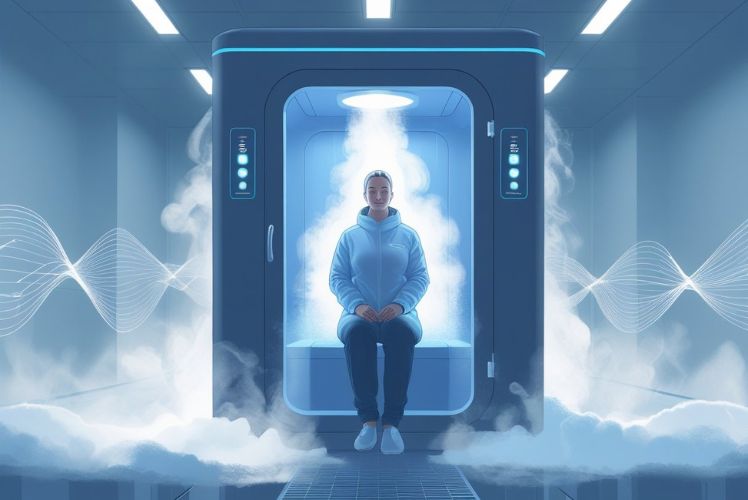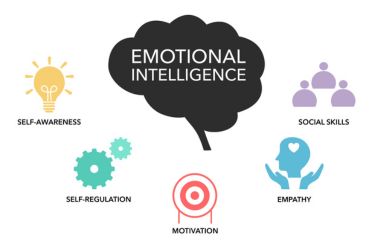Whole body cryotherapy involves brief exposure to extremely cold temperatures, and many of us are curious about its effects on our mental well-being. Research suggests that whole body cryotherapy may help reduce depressive symptoms, relieve stress, and improve our overall sense of well-being. These potential mental health benefits are drawing attention, especially for people seeking new ways to support emotional health.

We are seeing more studies exploring how cold therapy might affect brain chemicals, sleep quality, and mood. While it is not a replacement for standard treatments, it could offer helpful support alongside existing options. As public interest in mental health care grows, understanding the science behind whole body cryotherapy becomes even more important.
Key Takeaways
- Whole body cryotherapy may support better mental health.
- Potential benefits include boosted mood and improved sleep.
- Research is ongoing about how this therapy works and who it helps most.
Understanding Whole Body Cryotherapy

Whole body cryotherapy (WBC) started as a promising tool for managing pain, inflammation, and recovery in sports medicine. Today, it is also gaining ground as a method linked to mental health support and improved quality of life.
History and Principles of Cryotherapy
Cryotherapy involves exposing the body to extremely cold temperatures for short periods. The idea dates back to ancient civilisations, where cold was used to relieve pain and swelling. In the late 1970s, Japanese researcher Dr Toshima Yamaguchi developed the first cryosauna for treating rheumatoid arthritis.
We use extreme cold, typically below -100°C, to trigger physiological responses. Blood vessels constrict, inflammation reduces, and the body releases endorphins. These reactions are thought to benefit both physical recovery and mental well-being.
Cryostimulation, the scientific term for these short cold exposures, is now used for health, training, and therapy. Many sports medicine practitioners rely on cryotherapy to reduce recovery time and support rehabilitation.
Cryotherapy Methods and Cryochamber Technology
There are various methods of cryotherapy. The most advanced option is whole body cryotherapy. This method uses a special chamber or cryosauna that can drop to temperatures between -110°C and -140°C.
Sessions typically last 2 to 4 minutes. We step inside wearing protective clothing for our hands, feet, and ears. The cold air quickly lowers skin temperature, but core body temperature stays stable. The process is closely monitored for safety.
Other forms include ice packs, ice baths, and localised devices. However, the cryochamber and cryosauna offer more controlled and even exposure. Modern technology has made these chambers widely available in clinics, gyms, and wellness centres.
Whole-Body Cryotherapy Versus Localised Cryotherapy
The main difference between whole body and localised cryotherapy is the area of exposure. Whole body cryotherapy (WBC) targets the entire body inside a chamber. This can lead to full-body benefits such as mood improvement, pain relief, and reduced inflammation.
Localised cryotherapy only cools a specific part, like an injured knee or shoulder. It uses ice, gel packs, or small devices to apply cold directly to the affected area.
WBC is often preferred for issues involving multiple body systems or for general recovery. Local treatment is chosen when we need to target a single joint or muscle. Both are useful, but WBC provides a more global effect on the body and mind.
Whole Body Cryotherapy and Mental Health Outcomes

Research has shown that whole body cryotherapy (WBC) may help with both physical and psychological health conditions. Evidence so far highlights its effectiveness especially for symptoms of depression and in improving overall well-being.
Effects on Depression and Mood Disorders
Recent studies suggest WBC can help reduce symptoms of major depressive disorder and other mood disorders. According to meta-analyses and systematic reviews, adding WBC to standard treatments often improves outcomes for people facing depressive episodes.
Participants in clinical trials report lower scores on depression scales after several WBC sessions. Some data show improvement even when other treatments have not led to full recovery. These effects mostly appear in people with moderate to severe depression, including those who find little relief from medication alone.
Our understanding from PubMed-cited research supports that WBC likely affects mood by influencing inflammation and neurotransmitter levels. People receiving WBC report feeling less mental health deterioration during treatment.
Impact on Anxiety Disorders
WBC might also affect symptoms of anxiety, though the evidence is not as strong as it is for depression. Some studies report moderate improvements for people with generalised anxiety disorder or related conditions after a course of WBC.
Many patients describe reduced tension and worry, along with improved sleep patterns. However, published research includes fewer controlled trials for anxiety than for depression. We cannot confirm that WBC is effective for all anxiety disorders, but early results suggest it offers benefits when used as an add-on therapy.
Reported side effects are minimal and most people tolerate WBC well. More research is needed to better understand its full impact on anxiety.
Enhancements to Quality of Life and Well-Being
WBC has been linked to improved overall well-being and a higher quality of life for people with mental health concerns. Participants often describe feeling more energised and experiencing better sleep after regular treatments.
Clinical reports show that WBC decreases symptoms that may interfere with daily activities, such as fatigue or low motivation. These changes support a greater sense of control and participation in social life.
Some evidence also indicates benefits for people struggling with both physical pain and emotional distress. By supporting both body and mind, WBC may boost resilience and help prevent mental health deterioration over time.
Biological Mechanisms Underlying Mental Health Benefits

When we use whole body cryotherapy, our bodies experience several changes that may help improve mental health. These changes mainly involve brain chemicals, hormones, and the body’s response to inflammation and stress.
Endorphin and Serotonin Modulation
During cold exposure, our bodies release endorphins, which are natural chemicals that act as pain relievers and mood enhancers. This boost in endorphin levels often leads to feelings of well-being and even mild euphoria after a cryotherapy session.
The sudden cold can also affect serotonin, a key neurotransmitter responsible for stabilising mood and promoting feelings of calm. Research suggests that whole body cryotherapy may increase serotonin release, which can lead to better mood and reduced symptoms of depression.
By increasing both endorphins and serotonin, cryotherapy offers a way to enhance mood without relying solely on medication. People often report feeling happier and more energised following regular sessions.
Cortisol and Stress Reduction
Cortisol, known as the stress hormone, plays a critical role in how we respond to daily challenges. High levels of cortisol are linked with anxiety and other mood disorders. Whole body cryotherapy can help reduce cortisol levels, supporting our ability to manage stress.
After repeated cold exposure, the body begins to adapt by lowering the amount of cortisol released during stressful events. This adaptation can make us feel calmer and less overwhelmed in difficult situations.
By supporting healthy cortisol levels, cryotherapy not only helps reduce stress but also supports better sleep and mental clarity. This effect can be especially helpful for those struggling with chronic stress or poor sleep quality.
Role of Inflammation and Cytokines
Inflammation is tied to mental health. High inflammation levels, marked by increased cytokines, can affect mood and energy. Chronic inflammation is often seen in people with depression and other mental disorders.
Cryotherapy is shown to lower the production of certain pro-inflammatory cytokines. At the same time, it can raise anti-inflammatory markers. This shift in balance can help the brain work better, improving mood and reducing mental fatigue.
Lowering inflammation and oxidative stress may protect our nerve cells, making it easier to handle daily pressures. By supporting a healthier inflammatory response, cryotherapy adds another layer to the mental health benefits we can achieve.
Adjunctive and Comparative Treatments

As evidence grows, whole body cryotherapy is being studied not just as a stand-alone intervention, but as an adjunct to other established treatments. Research explores how it fits alongside medication, how it compares to other neuromodulation approaches, and what benefits it may bring for people with chronic health problems.
Cryotherapy as an Adjunct to Pharmacological Treatment
Cryotherapy is often explored as an additional option to standard pharmacological treatment for mood disorders. For people taking traditional anti-depressants, adding whole body cryotherapy may help enhance mood and reduce depressive symptoms.
Several randomised controlled trials and a 2021 meta-analysis report that those who use cryotherapy alongside medication show greater improvements in symptoms compared to those who use medication alone. These studies suggest added benefits in areas such as sleep, well-being, and quality of life.
We should note that most studies describe cryotherapy as adjunctive, not as a replacement for anti-depressants. Users typically continue their prescribed medications while doing cryotherapy, under medical guidance.
Comparison with Other Neuromodulation Therapies
When compared to other neuromodulation therapies, whole body cryotherapy works through different mechanisms. Treatments like deep brain stimulation and transcranial magnetic stimulation (TMS) target the brain directly to influence mood pathways. In contrast, cryotherapy uses cold exposure, which may affect hormone levels, inflammation, and the nervous system as a whole.
Inhaled nitrous oxide is another alternative that provides rapid relief in some cases, especially for treatment-resistant depression. However, we see that cryotherapy is often favoured for its non-invasive nature and relatively low side effect profile.
Our review of head-to-head studies is limited, but current clinical trials highlight that patient preference and the specific mental health condition often guide the choice between therapies.
Role in Chronic Medical Conditions
People with chronic medical conditions like fibromyalgia, multiple sclerosis, and chronic back pain often experience mood disorders alongside physical symptoms. Whole body cryotherapy is sometimes offered as a joint intervention targeting both physical pain and depression.
Clinical trials indicate that cryotherapy can lower pain levels, which may lead to indirect improvements in mood. A systematic review finds it useful as an add-on therapy for these conditions, especially when mood symptoms and pain are intertwined.
For these patients, combining cryotherapy with existing medical and mental health treatments aims to improve overall daily function, reduce distress, and enhance quality of life. The table below shows some chronic conditions studied alongside cryotherapy and common outcomes observed:
| Condition | Reported Outcome |
|---|---|
| Fibromyalgia | Reduced pain, less fatigue |
| Multiple sclerosis | Improved mood, less spasticity |
| Chronic back pain | Lower pain, better function |
Sleep Quality and Life Satisfaction Improvements
Whole body cryotherapy has shown potential to support better sleep and enhance aspects of daily well-being. This may offer practical benefits for people struggling with stress, low mood, or sleep disturbances.
Cryotherapy and Sleep Architecture
Research suggests that regular whole body cryotherapy sessions may help us fall asleep faster and experience deeper sleep cycles. Exposure to cold temperatures activates physiological responses in our bodies, such as reduced inflammation and shifts in hormonal balance, which could make it easier to achieve restful sleep.
Some studies have linked cryotherapy to improvements in sleep duration and sleep efficiency. People report waking up less often during the night and feeling more refreshed in the morning. This may be especially helpful for those with insomnia or disrupted sleep patterns.
We can look at the possible mechanisms driving these changes:
- Reduction in muscle soreness and pain
- Lower overall stress and anxiety levels
- Increased release of endorphins and serotonin
Together, these factors may help us establish more stable sleep routines.
Effects on Daily Function and Living Standards
Better quality sleep often leads to upgrades in how we function throughout the day. People using cryotherapy as an add-on therapy have shared that they feel more energetic and alert during daily tasks.
Improvements in mood and reductions in symptoms of depression have also been observed. Feeling less tired and irritable makes it easier for us to maintain healthy relationships and engage in activities we enjoy.
Here’s a quick look at benefits linked with life satisfaction and well-being:
| Benefit | Description |
|---|---|
| Reduced fatigue | More energy for daily activities |
| Enhanced mood | Lower levels of stress and sadness |
| Improved productivity | Better focus for work, study, or hobbies |
| Stronger social links | More positive interactions with friends and family |
By addressing both sleep quality and daytime function, whole body cryotherapy may play a role in improving our overall quality of life.
Current Research and Future Directions
Recent clinical trials and systematic reviews have explored whole body cryotherapy (WBC) as a potential treatment for mental health, especially depression. Evidence suggests promising results, but more research is needed to confirm safety, effectiveness, and long-term outcomes.
Key Clinical Trials and Systematic Reviews
We have seen several randomised controlled trials that test WBC as an add-on to standard care for depression and mood disorders. These studies often show that people report reduced depressive symptoms and improved quality of life after multiple sessions.
A 2021 meta-analysis summarised results from many trials. It found that WBC had a small but meaningful effect in reducing depressive symptoms when used with other treatments. Some studies also link WBC to better memory and cognitive function in people with mild cognitive impairment.
A systematic review in PubMed included data from both small and large studies. Most research points to WBC’s potential to support mental wellbeing through changes in mood and reductions in stress.
| Study Type | Key Finding |
|---|---|
| Randomised Controlled Trial | WBC can improve mood and lower depression scores |
| Meta-analysis | WBC offers modest benefit as adjunctive therapy |
| Systematic Review | WBC linked to improved cognition and wellbeing |
Limitations and Areas for Further Study
Although these findings are promising, there are several limitations. Most studies have small sample sizes and short follow-up periods. This makes it hard for us to know how long the benefits last.
Many clinical trials do not use standardised WBC protocols, with temperatures and session times varying. Differences like these can influence how well treatment works. Additionally, many studies include participants already on medication, so we do not yet know how WBC works as a primary treatment.
We need future studies with larger groups and longer observation. Randomised controlled trials should focus on safety, standardised methods, and whether the benefits apply to different age groups or those with other mental health conditions. This will help us understand when WBC is most effective and safe.
Frequently Asked Questions
We explore how whole body cryotherapy (WBC) relates to mental health issues, looking at its effects on depression, anxiety, and its role in regular treatment. We also consider what scientific studies and user experiences reveal, as well as concerns about pseudoscience.
What impact does whole body cryotherapy have on depressive symptoms?
Several studies have shown that WBC can help reduce symptoms of depression. Research suggests people might feel improvements in mood after regular sessions, thanks to changes in endorphins and other chemicals in the brain. It is often seen as a useful supportive tool for those dealing with mild to moderate depressive symptoms.
How effective is whole body cryotherapy in alleviating anxiety disorders?
Some evidence points to WBC helping to lower anxiety levels. The process of brief cold exposure encourages the release of neurotransmitters such as serotonin and dopamine. These changes may produce a calming effect, though WBC should not replace standard treatments for anxiety disorders.
Can whole body cryotherapy be considered a reliable adjunct treatment to traditional mental health therapies?
WBC is mostly considered an add-on rather than a replacement for established treatments. When combined with medical and psychological therapies, it may support wellbeing and mood improvements. Most experts recommend that people continue their main treatments while using WBC as a supplementary option.
Are there scientific studies that support the efficacy of whole body cryotherapy for mental health?
Recent reviews and meta-analyses have found that WBC can be effective in decreasing certain mental health symptoms, especially in depression. The research is still growing, but early results from controlled studies are promising, suggesting measurable benefits to wellbeing and mood.
What do user reviews typically say about the mental health benefits of whole body cryotherapy?
Many users report feeling less stressed, more focused, and in a better mood after WBC sessions. Some people claim long-term benefits, such as reduced anxiety or improved sleep. However, personal results can differ, so individual experiences should be viewed alongside scientific findings.
Is there any evidence to suggest that whole body cryotherapy is pseudoscientific with regard to mental health improvement?
While sceptics question the strength of current evidence, WBC is supported by multiple clinical studies for its positive effects on mental health symptoms. Lab research and real-world experience both point to some benefits, though more large-scale studies are needed for stronger conclusions.





















